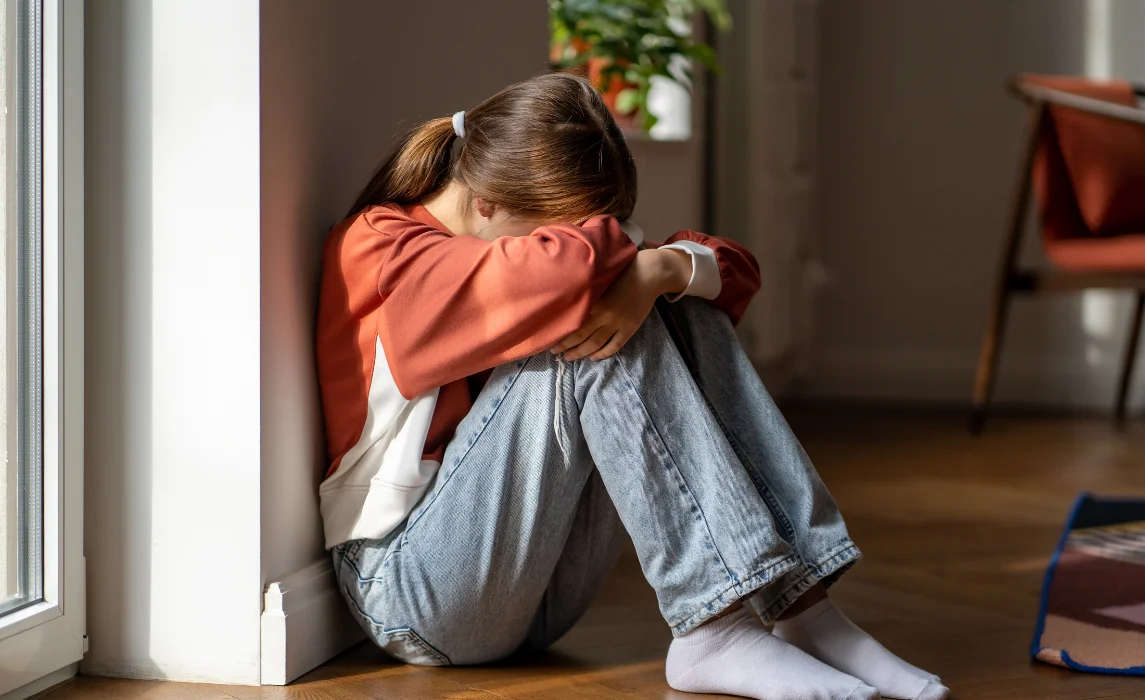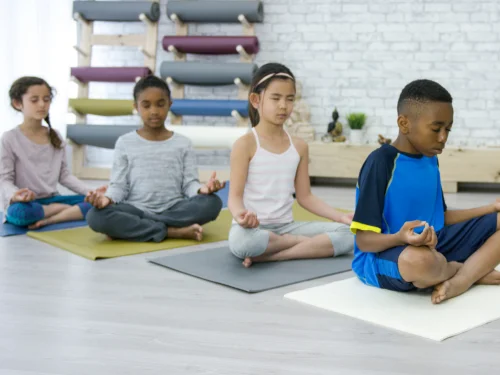10 Mental Health Activities for Kids: Fun Ways to Build Emotional Strength
Yes—finger plays, clapping games, and dance routines that use hand gestures all help. Combine rhythm and repetition for deeper learning.
Send home simple activity ideas, kits, or worksheets. Offer short instructions and encourage family involvement. Regular practice builds lasting progress.
Try origami, sticker scenes, stringing pasta, or painting with Q-tips. Crafts that use small pieces build precision and control.
Many parents and teachers know that moment: when a child feels something deeply but doesn’t have the words yet. That’s where mental health activities come in. They give children simple, playful ways to explore emotions, build resilience, and learn that it’s okay to feel — all within safe, supportive spaces.
Between daily stress, growing distractions, and the challenge of staying focused, kids need support to build emotional balance and calm. It’s not about fixing problems — it’s about giving them tools to grow stronger inside.
Why Mental Health Activities Matter for Kids

Children don’t automatically know how to calm down, speak up, or bounce back from frustration. These skills grow over time, just like reading or riding a bike.
And when we give kids space to talk, play, and reflect on emotions, they learn that feelings aren’t scary — they’re just signals that help us understand ourselves.
Strong mental health helps children:
- Recognize and name what they feel
- Cope with stress and disappointment in healthy ways
- Build confidence and self-esteem
- Connect deeply with others
- Approach challenges with calm and creativity
Research from the World Health Organization (WHO) reminds us that positive mental health in childhood leads to healthier, happier adults. So, the earlier we start, the stronger their foundation becomes.
10 Fun and Effective Mental Health Activities for Kids
.webp)
Here are creative, kid-friendly activities designed to encourage emotional growth and resilience.
1. Gratitude Jar
A decorated jar where kids drop notes about things they’re thankful for. It’s amazing how much magic can fit into a jar.
How to try it:
- Provide colorful slips of paper.
- Encourage daily or weekly gratitude notes.
- Revisit them during challenging days for a mood boost.
2. Mindful Breathing with Bubbles
Blowing bubbles slowly helps children focus on their breath and stay present, reducing stress. Children love bubbles — and they’re a perfect tool for mindfulness.
Tip: For anxious moments, have them imagine their worries floating away inside each bubble.
How to try it:
- Use a bubble wand and soap solution.
- Take deep breaths in, blow slowly, and watch bubbles float away.
3. Feelings Charades
A playful way to identify and express emotions without words. Not every child can say “I’m frustrated,” but they can act it out.
Why it helps: It builds empathy — and makes emotional expression feel safe and even fun.
How to try it:
- Write different emotions on cards.
- Take turns acting them out.
- Discuss times when each emotion might occur.
4. Nature Scavenger Hunt
Spending time outdoors boosts mood and lowers anxiety. There’s something soothing about nature. The fresh air, the colors, the sounds — all help children unwind.
How to try it:
- Create a list of nature items to find (smooth rock, colorful leaf, bird song).
- Explore a park or backyard together.
5. Mind Jar
A clear jar filled with glitter and water that children shake and watch settle—symbolizing how emotions can calm with time. A calm-down jar filled with glitter and water is like a tiny metaphor for emotions.
How to try it:
- Mix warm water with glitter glue in a sealed jar.
- Shake when feeling upset and watch until the glitter settles.
6. Acts of Kindness Calendar
Doing good for others nurtures empathy and boosts happiness. One small kind act can brighten someone’s day — and build a child’s sense of purpose.
How to try it:
- Make a monthly calendar with one kind act per day (help with chores, send a compliment, share a snack).
- Mark them off as completed.
7. Yoga Story Time
Combining movement with storytelling promotes relaxation and body awareness. Mixing stories with movement brings calm to even the busiest days.
How to try it:
- Pick a simple story and pair actions or poses with each part.
- Encourage deep breathing during transitions.
8. Emotion Journaling
A safe space for kids to write or draw about their feelings. Some children open up through words, others through art.
How to try it:
- Give them a special notebook.
- Encourage entries after school or before bedtime.
- Let them decorate it to make it personal.
9. Silly Dance Breaks
Releasing energy through dance triggers feel-good brain chemicals. When emotions build up, sometimes the best thing to do is move!
How to try it:
- Play upbeat music.
- Dance in funny or exaggerated ways.
- Laugh and let go of stress.
10. Positive Affirmation Mirror
Boost self-esteem by surrounding kids with encouraging words. Kids often repeat what they hear — so let’s make sure some of it is kindness.
How to try it:
- Write affirmations like “I am brave” or “I can do hard things” on sticky notes.
- Place them on a mirror for daily reminders.
Benefits of Mental Health Activities for Kids
.webp)
When you turn these practices into habits, something beautiful happens. Children begin to pause before reacting. They express gratitude more often. They comfort friends who are sad. They handle setbacks with confidence.
These small shifts lead to big emotional growth. Over time, kids who regularly engage in mental health activities show:
- Improved Self-Esteem – Kids learn to value their strengths.
- Better Coping Skills – They can handle challenges with confidence.
- Enhanced Focus – Mindfulness supports attention and learning.
- Stronger Social Skills – Team activities foster empathy and cooperation.
- Reduced Anxiety – Relaxation techniques help calm the mind.
- Positive Outlook – Gratitude and kindness build a happier mindset.
They’re learning not just how to be happy, but how to build happiness.
You May Also Like: 20 Indoor Physical and Dexterity Challenges for Kids: Fun, Movement, and Skill-Building All Year Round
Tips for Parents and Teachers
- Model it yourself. Kids learn emotional habits by watching adults.
- Keep it playful. The goal isn’t perfection — it’s connection.
- Be patient and consistent. Growth takes time, and every small effort counts.
- Listen openly. Sometimes children just need to be heard, not fixed.
- Celebrate effort. Praise their curiosity, kindness, and courage to try.
You May Also Like: 10 Fun Writing Activities for Kids: Spark Creativity, Build Skills, and Enjoy the Process
Conclusion
.webp)
Helping kids care for their mental health doesn’t mean adding one more thing to a busy schedule.
It means weaving small, mindful moments into ordinary life — a jar of gratitude on the kitchen table, a quick bubble break before homework, a quiet chat before bed.
When we give children space to understand their feelings, we teach them one of life’s greatest lessons:
It’s okay to feel. It’s okay to pause. And it’s always possible to begin again.
You May Also Like: How to Deal With Sensory Overload: Triggers, Symptoms, and Calming Strategies
Frequently Asked Questions (FAQ)
1. What are mental health activities for kids?
They’re simple, playful routines that help children manage emotions, reduce stress, and build self-awareness. Examples include gratitude jars, mindful breathing, journaling, and kindness activities. They make emotional learning fun and approachable.
2. Why are mental health activities important for children?
Emotional well-being affects every part of a child’s life — learning, friendships, confidence, and even physical health. Teaching kids mental health habits early helps them handle stress, express feelings safely, and develop lifelong coping skills.
3. How often should kids do these activities?
A few minutes a day is often enough! Consistency matters more than duration. You can add short moments of mindfulness or gratitude before bedtime, after school, or during class transitions.
4. What if my child doesn’t want to talk about feelings?
That’s okay — many children express emotions through play, art, or movement. Let them choose activities they enjoy, like drawing, dancing, or storytelling. Over time, comfort and trust will open space for conversation.
5. Can teachers use these activities in the classroom?
Absolutely. Activities like bubble breathing, feelings charades, and kindness calendars work beautifully in classrooms. They support social-emotional learning (SEL) and help students regulate energy, focus better, and connect with peers.
6. What age group are these mental health activities for?
Most activities here suit kids aged 4 to 10, but they can be adapted for older or younger children. The key is adjusting the language, complexity, and structure based on developmental stage.
7. How can parents support mental health at home?
Model calm behavior, talk openly about feelings, and make mental health a normal topic — like talking about brushing teeth or eating healthy food. Create safe spaces for emotions and celebrate small wins together.
8. Do these activities replace professional therapy?
No. These activities support emotional health but don’t replace therapy. If a child shows ongoing signs of distress, anxiety, or behavioral changes, seek guidance from a licensed mental health professional.
9. What if I don’t have much time for these activities?
You don’t need long sessions. Even one mindful minute — taking deep breaths together, naming one thing you’re grateful for, or sharing a hug — can make a real difference in your child’s emotional balance.
10. How can I make mental health fun for kids?
Keep it light and creative! Use music, art, storytelling, or games. Kids are more likely to engage when activities feel like play rather than lessons.




